EGF Instrument Booking
Welcome to the Environmental Geochemistry Facility! We are here to support all DEEPS members, visitors, and external researchers in their scientific necessities. Our primary aim is to provide reliable data promptly, ensuring that all project deadlines are met with ease. If you’re interested in using any of our instruments, please contact our Facility Director, Marcelo Alexandre. For more details about our scheduling and user queue, just click here.
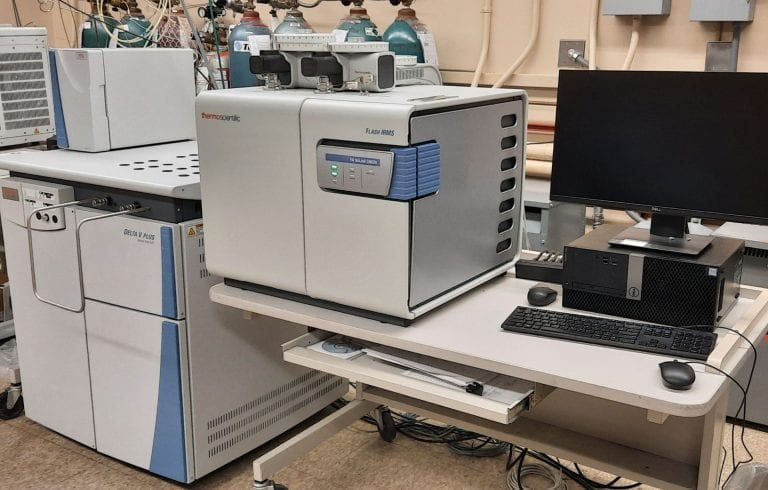
Delta V Plus GC-EA-IRMS for δD and Bulk analysis
The Delta V Plus GC-EA-IRMS gas chromatography and isotope ratio mass spectrometer system has been dedicated to ascertain the relative ratio of stable isotopes of hydrogen (2H/1H) of individual compounds from complex mixtures. It is also able to obtain the isotope ratio of carbon (13C/12C), Nitrogen (15N/14N) and Hydrogen (2H/1H) in bulk samples. The ionized analyte gases (CO2, N2 or H2) are separated in a single magnetic sector analyzer, detected and the final isotope ratio reported relative to a known isotopic standard.

Delta V Plus GC-IRMS for δ13C
The Delta V Plus GC-IRMS gas chromatography and isotope ratio mass spectrometer system has been dedicated to ascertain the relative ratio of stable isotopes of carbon (13C/12C) of individual compounds from complex mixtures. The separated analytes from the GC are oxidized into CO2 in a high temperature reactor. The CO2 will be ionized and separated in a single magnetic sector analyzer, detected and the final isotope ratio calculated. The values are reported relative to a known isotopic standard.
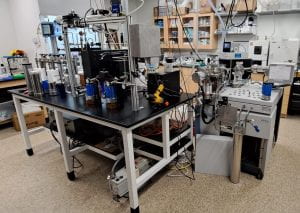
Thermo 253+ IRMS for triple Oxygen Isotopic Composition
A Thermo 253+ with a custom bromine pentafluoride (BrF5) fluorination vacuum extraction line is dedicated to determine the triple oxygen isotopic composition (17O/16O and 18O/16O) of silicates, carbonates, gas and waters. Sample analyses can be carried out via nickel reaction vessels or using a 30W CO2 laser system to produce O2 gas that is ionized and separated using magnetic sector analyses and detected using a custom O2 collector (m/z = 32, 33, 34, 35, 35.5 and 36). Values are reported relative to known isotopic standards.
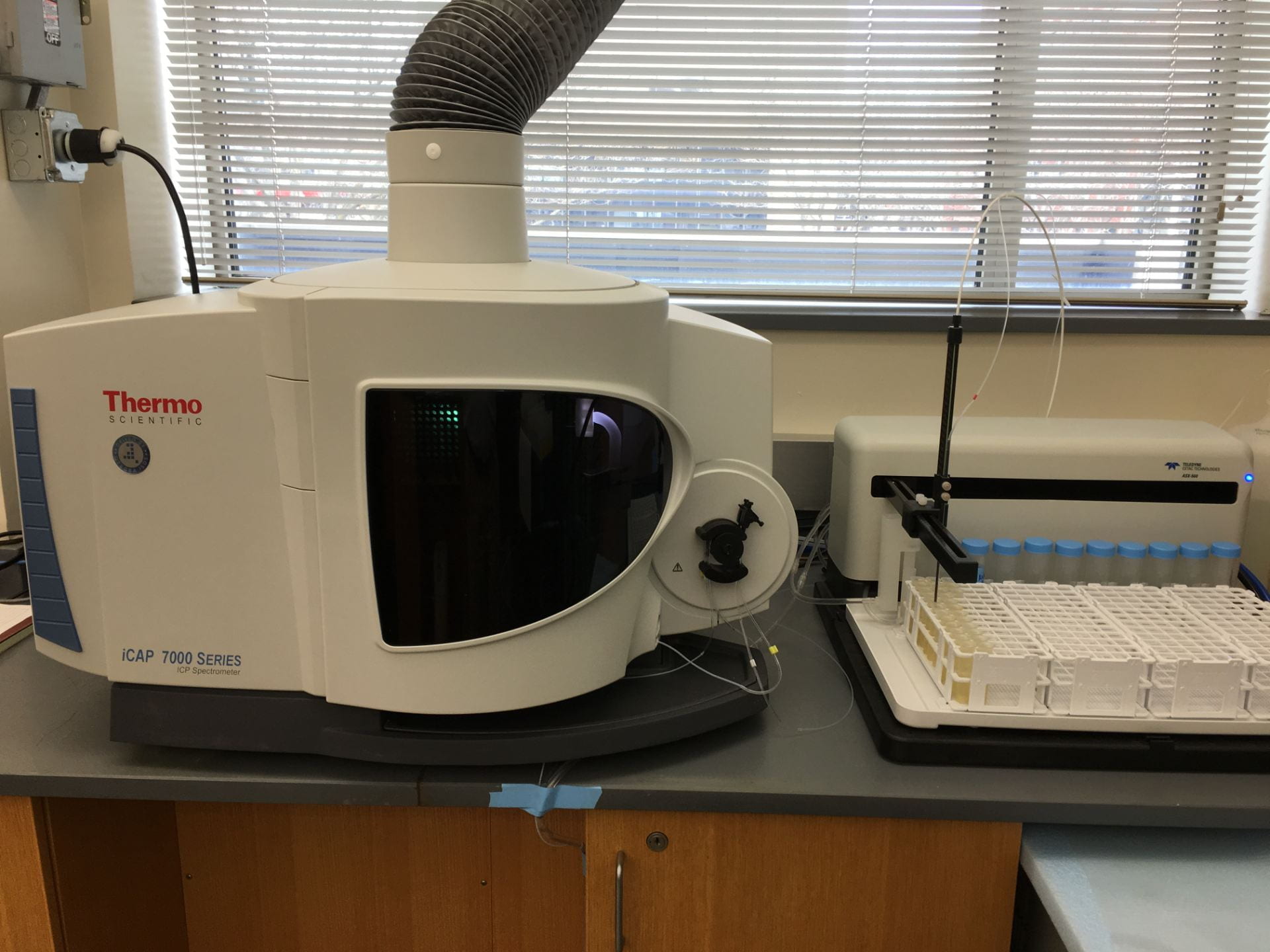
ICP Atomic Emission Spectrometer
The Thermo Scientific iCAP 7400 DUO has both radial and axial plasma viewing capibilities and is equipped with a Teledyne ASX-560 240 position autosampler. It is driven by Thermo Scientific Qtegra software which operates on a Windows7 system. The charge injection device (CID86) detector allows free choice of wavelengths over the 166-847nm range.
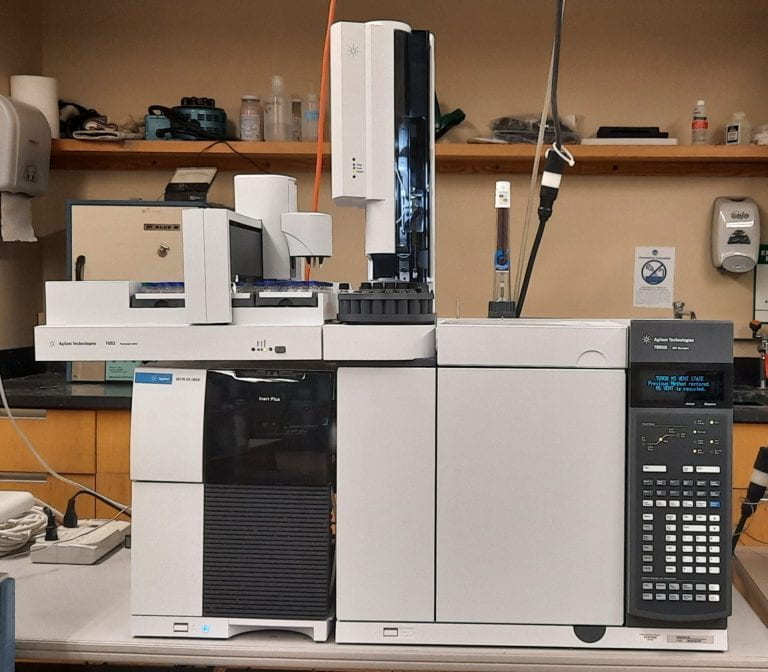
Agilent HP5977B GC-MSD
The Agilent HP5977B GC-MSD is a gas chromatography system coupled to a mass spectrometer detector. Volatile and semi-volatile organic compounds are separated in the capillary column and sent to the mass spectrometer analyzer. The mass spectrometer is able to measure the molecular weight of a compound to provide data to both quantify and identify compounds.

Agilent HP7890B GC/FID
The Agilent HP7890 GC/FID is a gas chromatography used to separate and detect trace levels of volatile and semi-volatile organic compounds. The sample, or its extract, is vaporized in the injection port. Pressure is applied and the mobile phase (gas) moves the analyte through the column. Open tubular capillary columns are the most popular columns used in GC because they have the ability to separate hundreds of analytes in a given sample. The Flame Ionization Detector (FID) burns the analytes in a hot, hydrogen-air flame, generating a signal that is proportional to the amount of the target compounds in the sample.
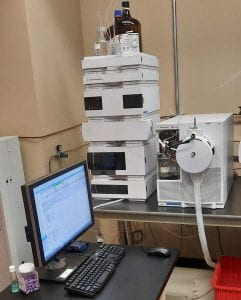
Agilent 1200 LC/MS System
The Agilent 1200 LC/MS System is a liquid chromatography unit with fluorescence (FLD), diode-array (DAD) and mass spectrometer (MSD) detectors. Semi and non-volatile analyte can be analyzed in this system. Once inject, the compounds are carried by a liquid carrier through the column and are separate by differential adsorption. Using a spectrum range between 190 nm and 950 nm, the concentration of a given sample component may be determined using FLD or DAD. The mass spectrometer will provide qualitative and quantitative analysis.
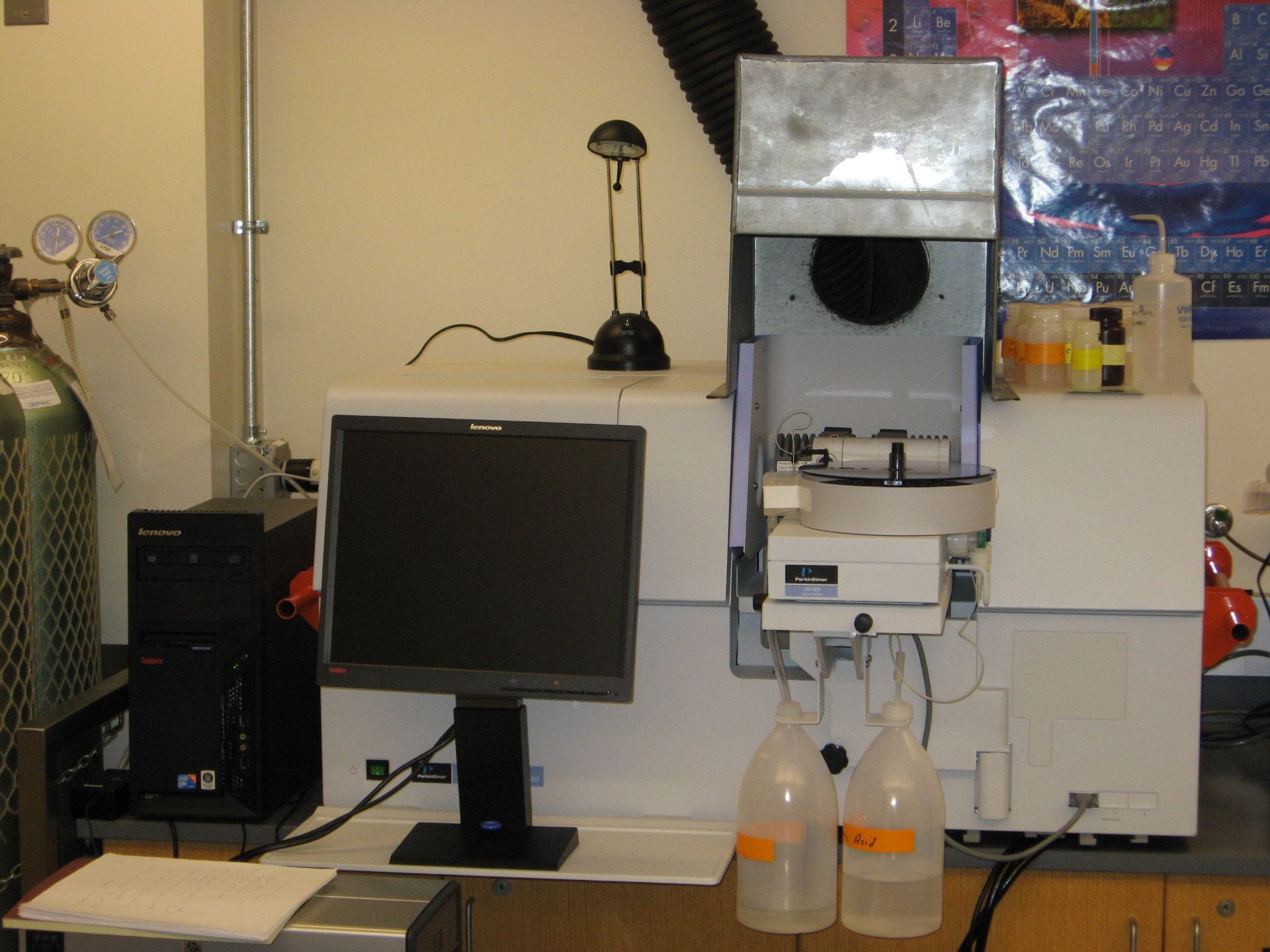
Perkin Elmer Graphite Furnace Atomic Absorption Spectrometer
The AA spectrometer in MacMillan Hall is a Perkin Elmer AAnalyst 600, which uses a THGA Graphite furnace as a heat source. The temperature is controlled so that the sample is dried, ashed, and atomized, after which the atomic vapor fills a tube, through which light is passed. Some of this light is absorbed, and identification and concentrations of the sample is determined from the absorption spectrum. This spectrometer is useful for measuring trace levels of metals in water and digests of soil, plant, and organic materials.
More information (Brown login required): GFAAS Protocol
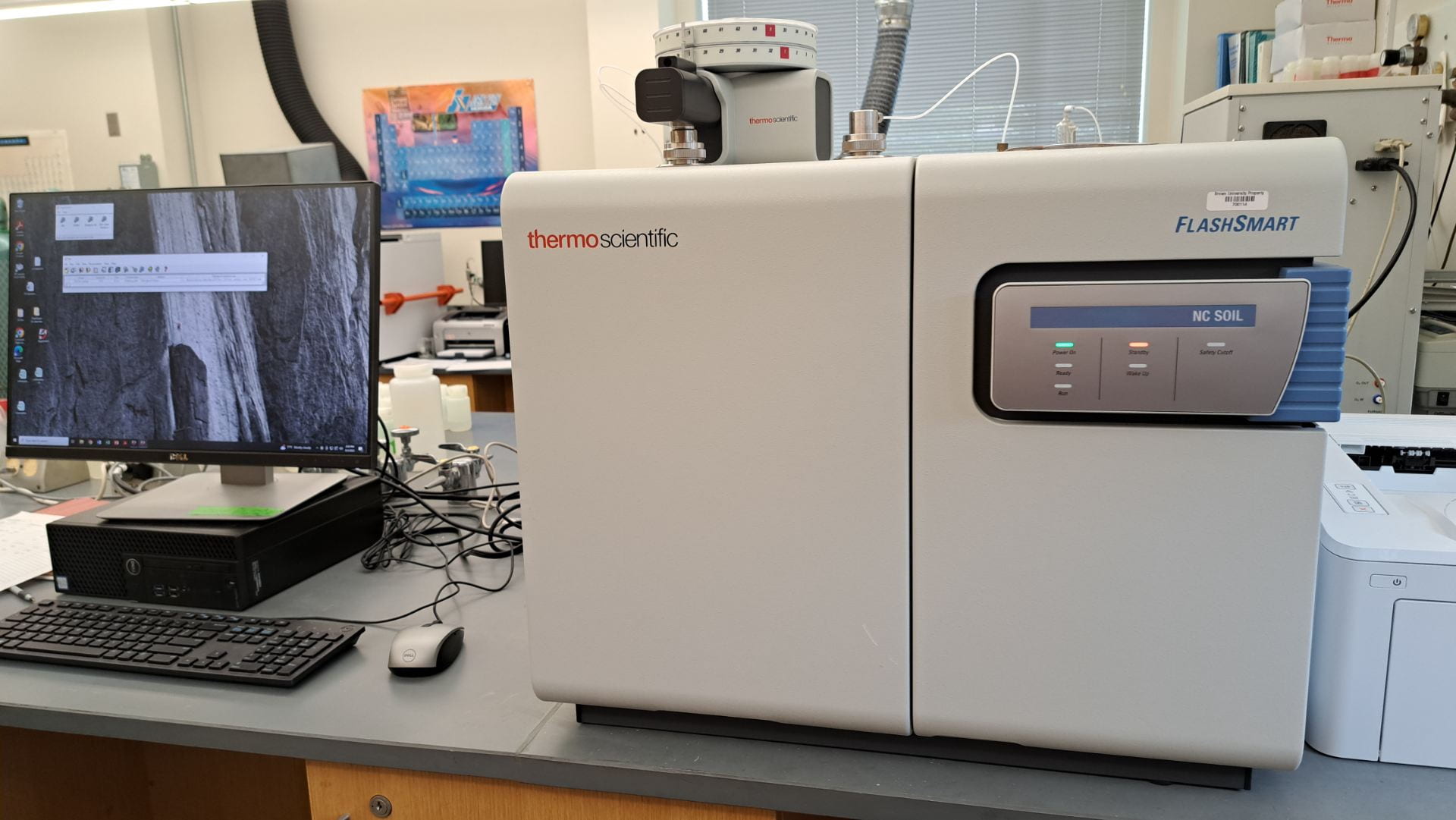
Carbon-Nitrogen Elemental Analyzer
The Thermo Scientific Flash Smart elemental analyzer is used to measure carbon and nitrogen content of samples. Our system consists of a base unit, an Autoloader, and two 32-position carousels. Samples are converted to gas via dynamic flash combustion, moved through oxidation-reduction reactors and an H2O absorptive trap, swept through a GC column where they are separated and subsequently detected by a thermal conductivity detector. Depending on how the sample is prepared, the analyzer is routinely used to determine the organic carbon, total carbon, and nitrogen content of soils, sediment, and plant material.
More information (login required): Carbon-Nitrogen Elemental Analyzer Protocol – Template(leaves) – Template (soils)
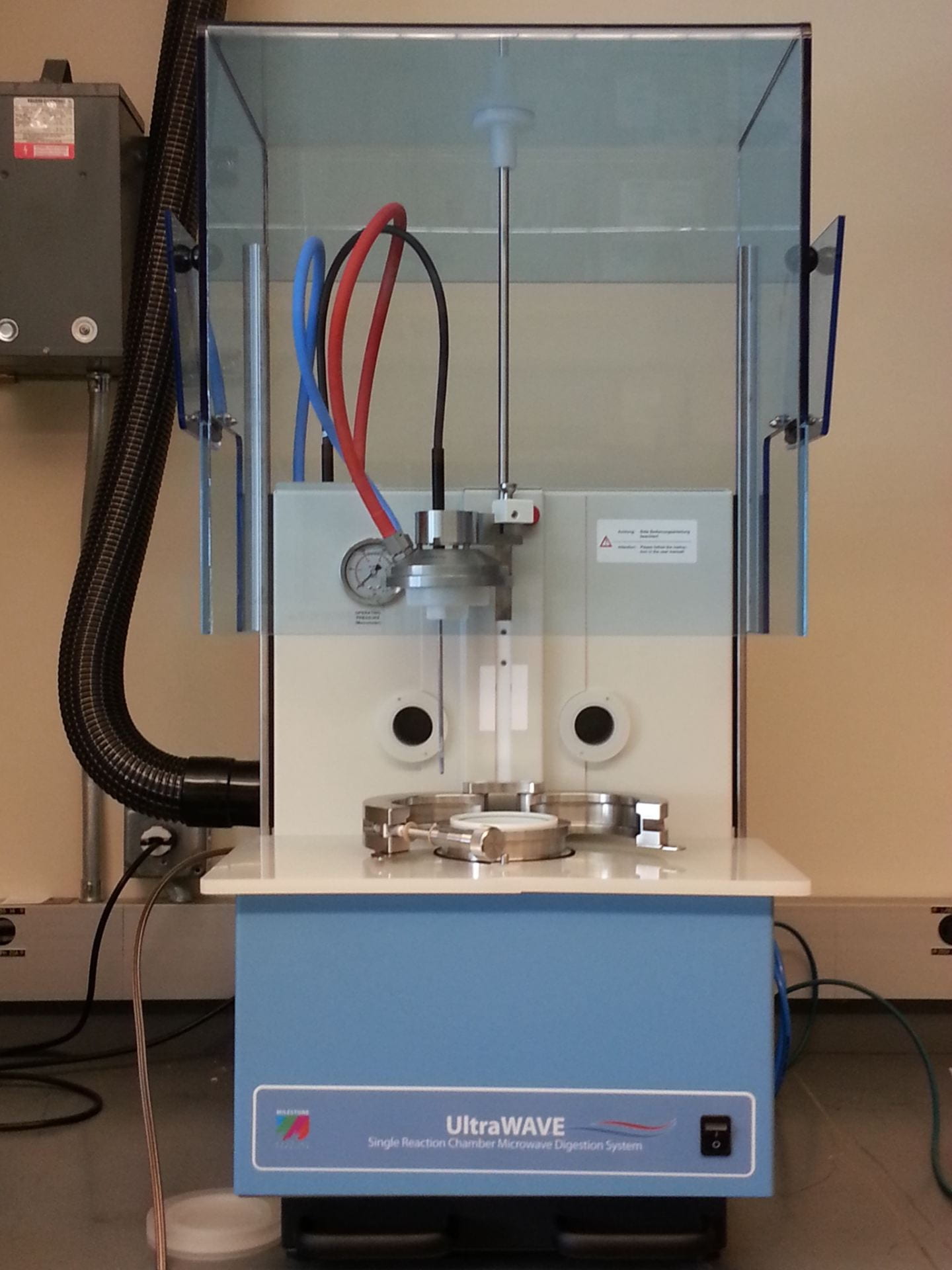
Milestone UltraWave SRC Microwave Digestion system
MacMillan Hall houses a Milestone Ultrawave Single Reaction Chamber (SRC) Microwave Digestion System. The Ultrawave is used to prepare samples for elemental analysis on GFAAS, ICP-AES, or ICP-MS instruments. The system can handle up to 15 glass or TFM vials and can accommodate different sample types and acid mixtures in a single run. The system operates up to 199 bar pressure and 300°C. EasyControl software is used to operate the instrument and monitor the temperature and pressure of the chamber during the run.
More information (Brown login required): Organic Matter Digestion using Ultrawave
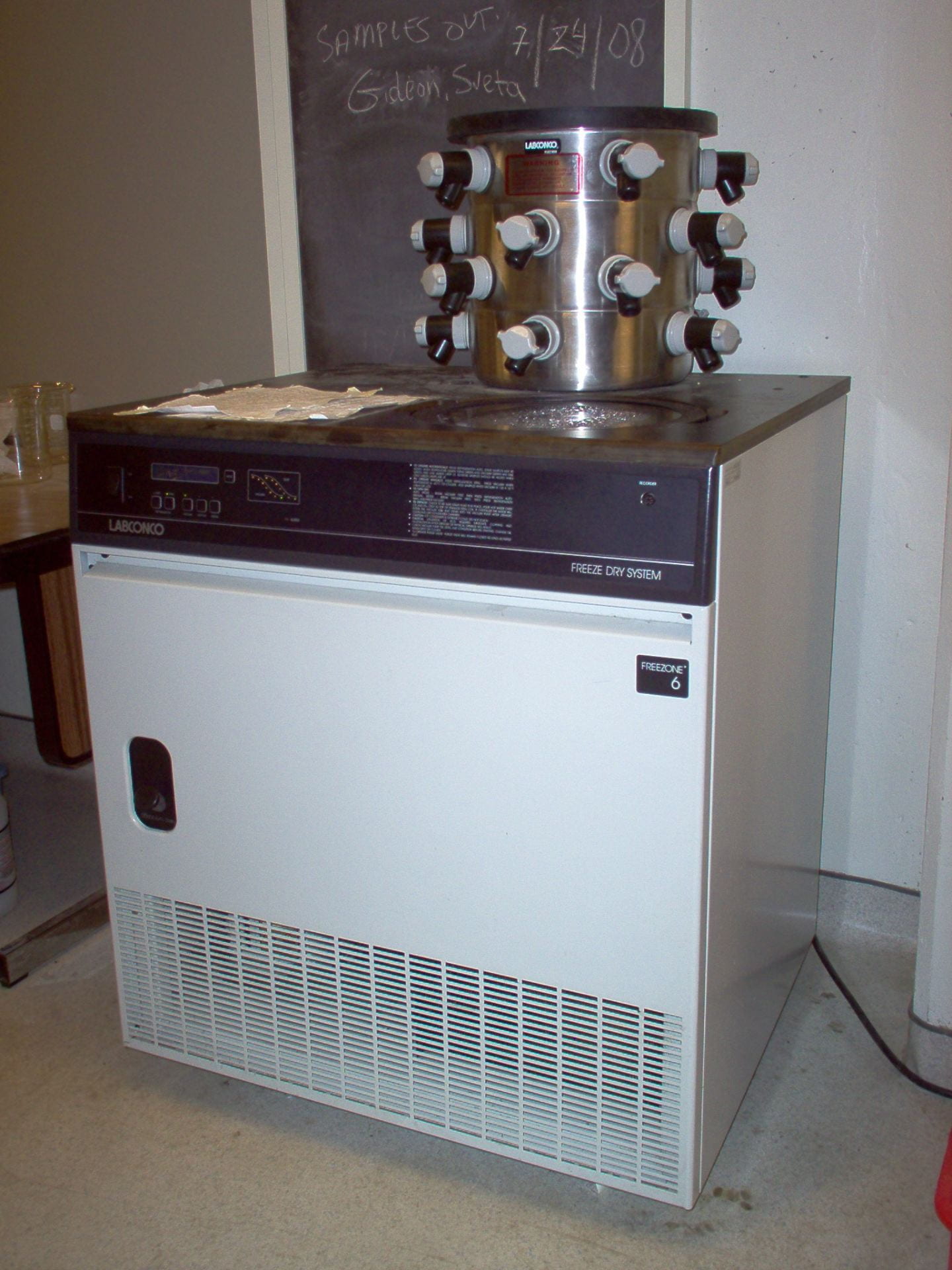
Freeze Dryer
MacMillan Hall houses two LABCONCO FreeZone 6 Liter Freeze Dry Systems for removing water and other solvents from frozen samples by sublimation.
More information (Brown login required): Freeze Drying Instructions with purge – Freeze Drying Instructions without purge
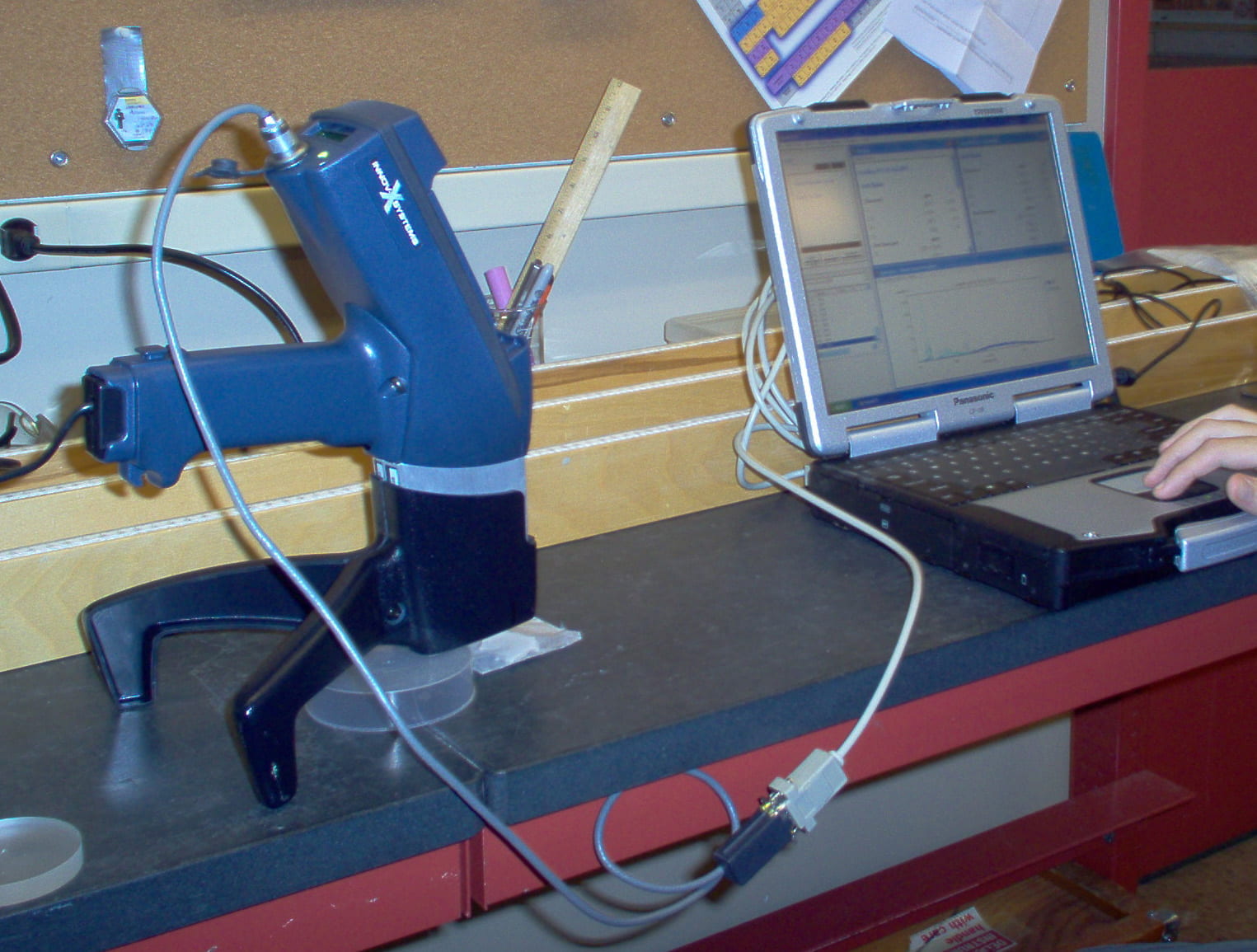
Olympus Handheld XRF – Aphha and Delta models
The Olympus Alpha 4000 and Delta Professional Handheld XRF identify and measure the chemical composition of a given sample. The instrument is applied to the surface of the sample, where upon trigger, a beam of X-rays excites electrons in the atoms of the sample. The spectrum obtained from these excited electrons reveals both the elemental content of the sample, as well as the concentration of each element identified within the sample. The advantage of the handheld XRF is that it is portable and quicker, which allows for greater flexibility in analyzing samples. The Delta model can be mounted to the GeoTek multisensor core scanning track to obtain the chemical composition of core sections. The Alpha model is primarily used for the rapid analysis of lead (Pb) in soils and sediments.
More information (Brown login required): Innov-X Handheld XRF Protocol
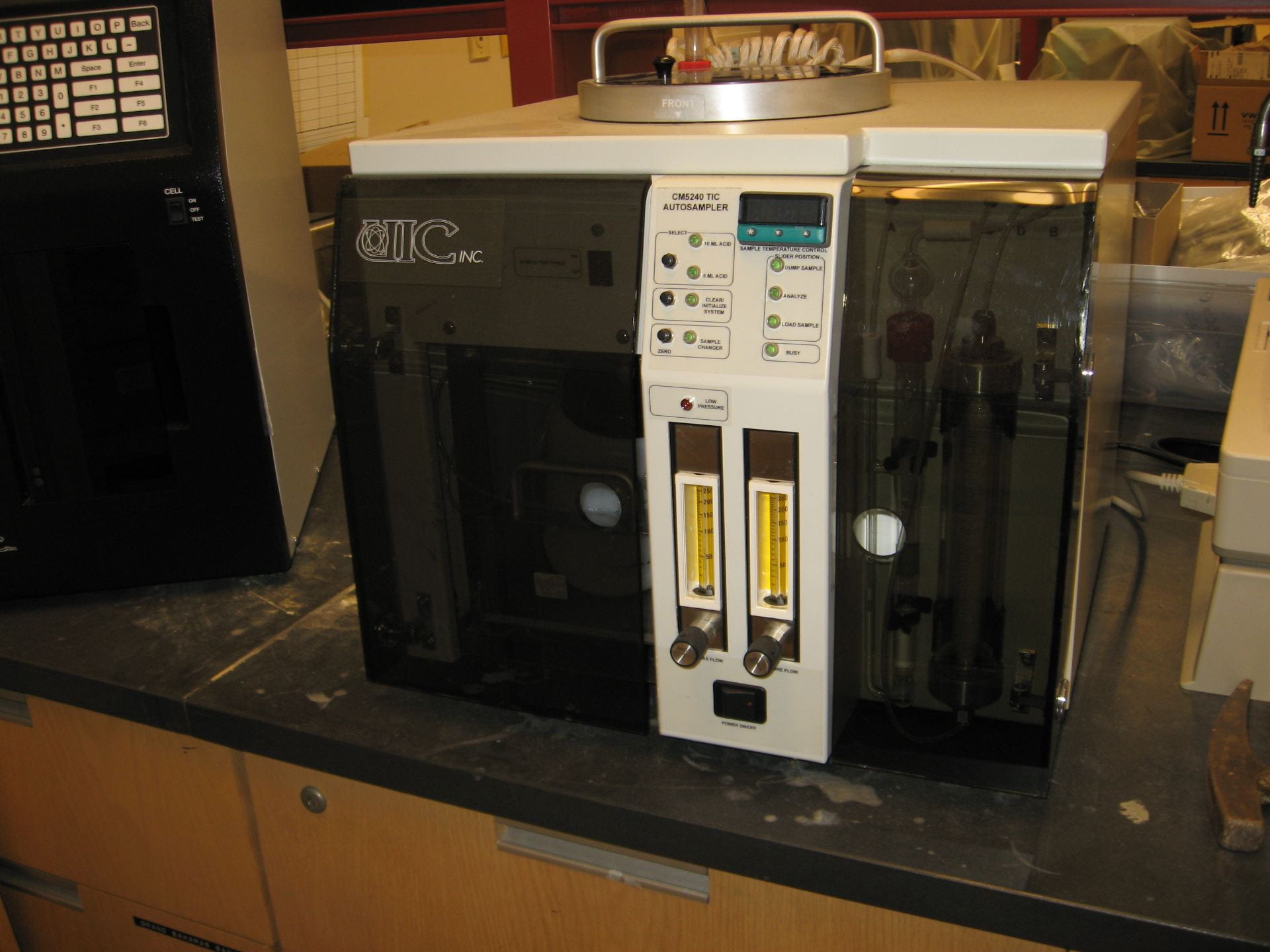
UIC, INC Inorganic Carbon Analyzer
The UIC, Inc. CM240 TIC Analyzer is capable of measuring total inorganic carbon in a wide variety of sample matrices. It combines the CM5240 automated sample acidification sample introduction system with the CM5014 Coulometer. Solid samples ranging from low ppm to 100% inorganic carbon can be analyzed with this system.
More information (Brown login required): Coulometer Instructions
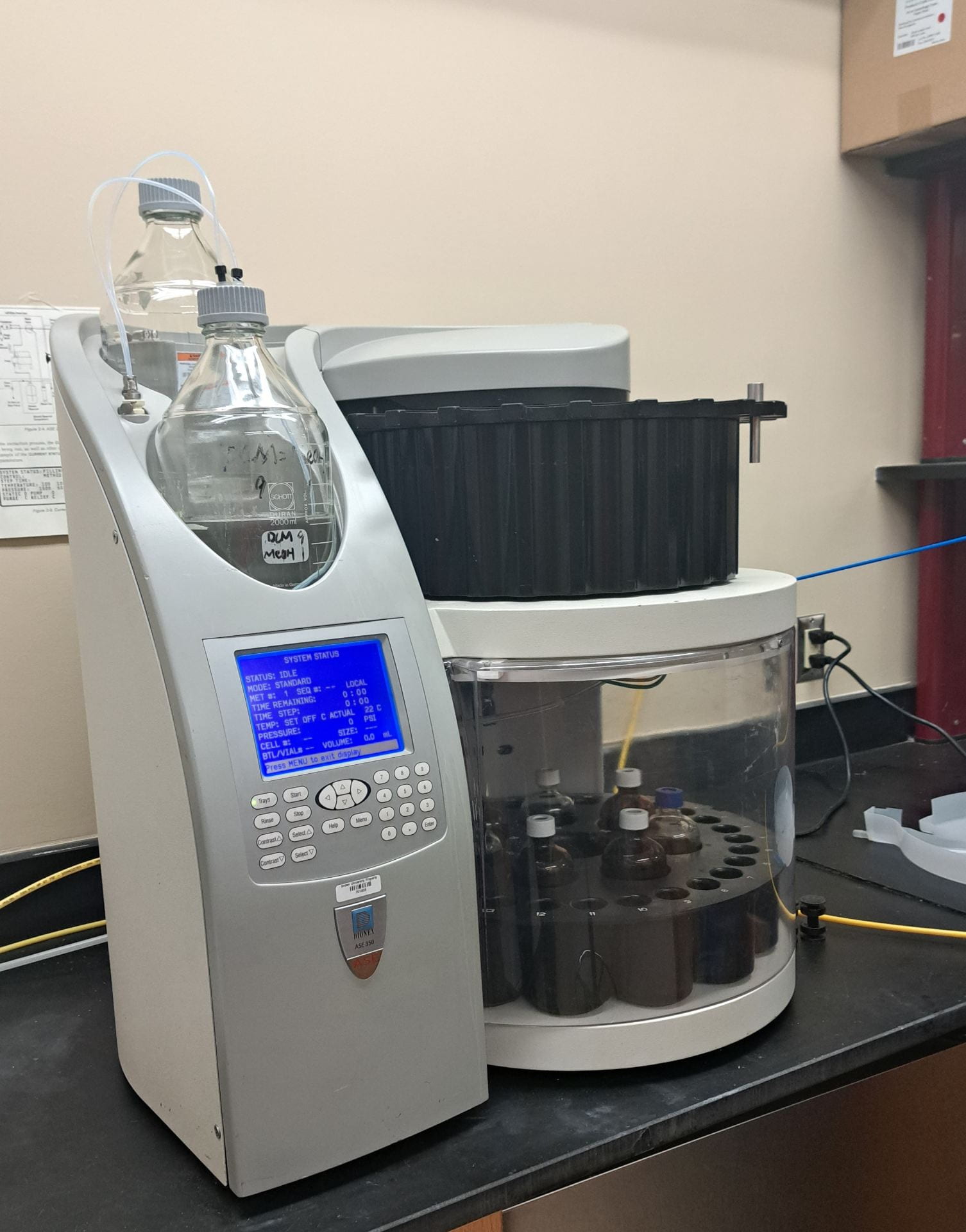
Dionex Accelerated Solvent Extractor
Dionex Accelerated Solvent Extractor (ASE) is used to extract organic compounds from soils, sediments, and organic material. The ASE moves the extraction solvent through a heated extraction cell that contains the sample. The extraction is performed by direct contact of the sample with the hot solvent. When the extraction is complete, the solvent is moved from the cell to a collection vial using compressed nitrogen. Our system is capable of handling 24 samples at a time.
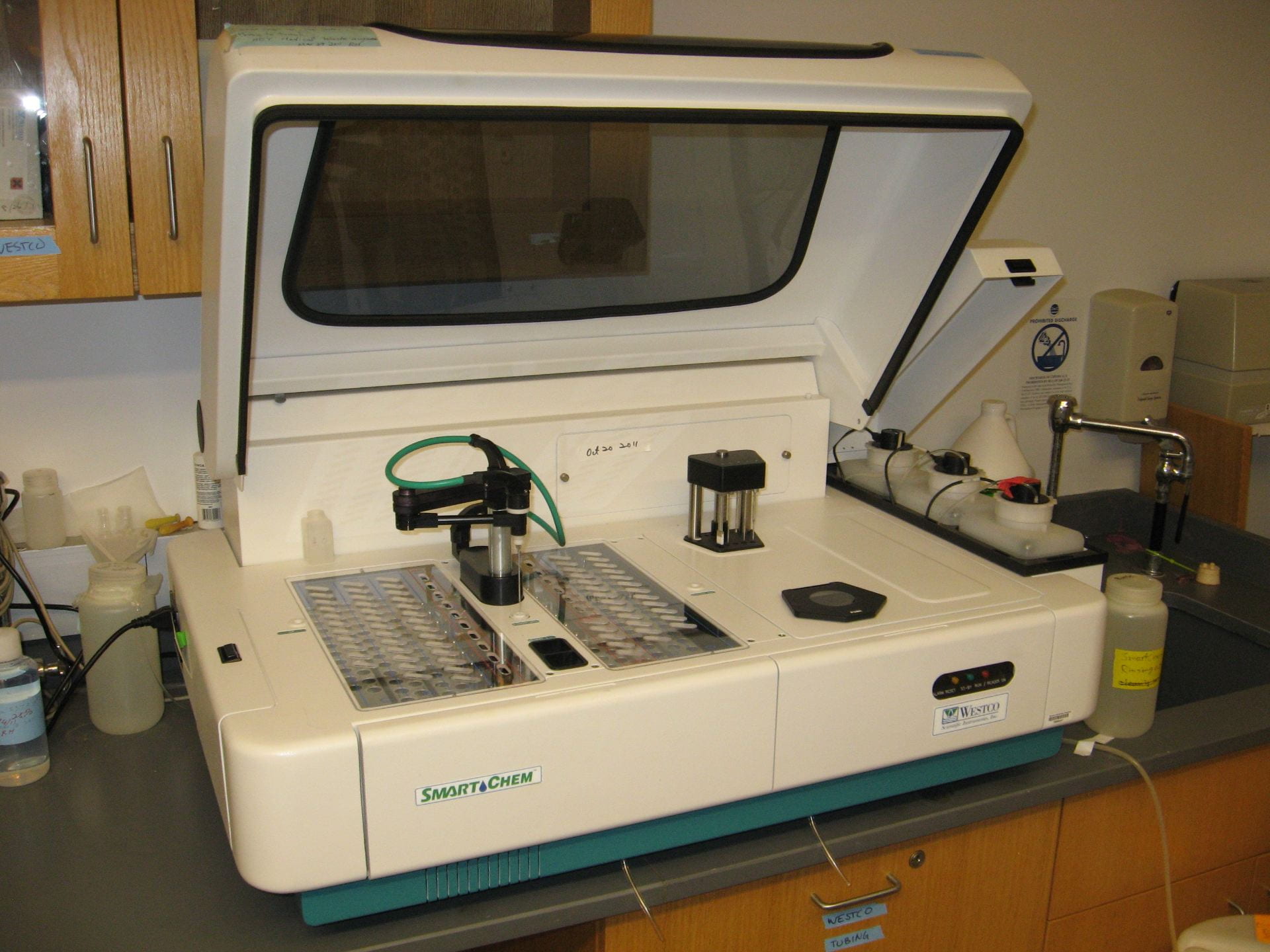
Westco Smartchem 200 Discrete Analyzer
The Westco Smartchem 200 Discrete Analyzer is primarily used to determine nutrient concentrations in water samples and soil extracts. Liquid samples are placed in cups in a 126-position autosampler along with reagents and standards. The sampler loads approximately 300 µl of solution into a pre-washed cuvette for reaction with reagents and photometric analysis at discrete wavelengths appropriate for the analyte of interest. Samples can be analyzed at a rate of 1-3 minutes per sample requiring about 1-4 ml of solution to measure up to 6 analytes.
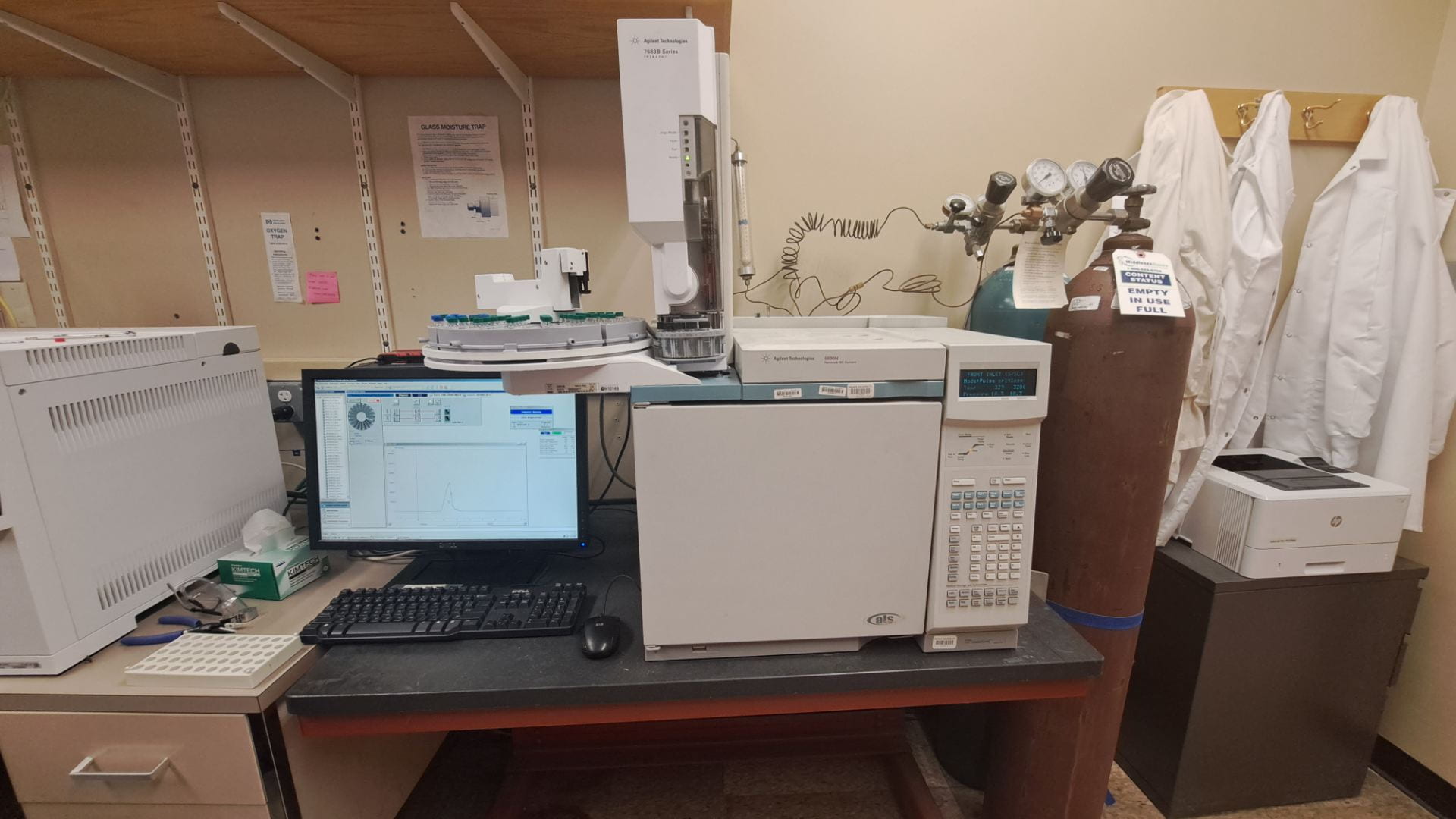
Agilent Tech HP6890 GC/FID
The Agilent Tech HP6890 GC/FID is a gas chromatography unit that detects and measures the trace levels of semivolatile organic compounds in given samples. A collected sample is vaporized and dissolved, and then injected along with a chemically inert carrier gas into a purge-packed column. A detector compiles a spectrum of the separated components, providing an identification of the compound and a measurement of its concentration in the sample.
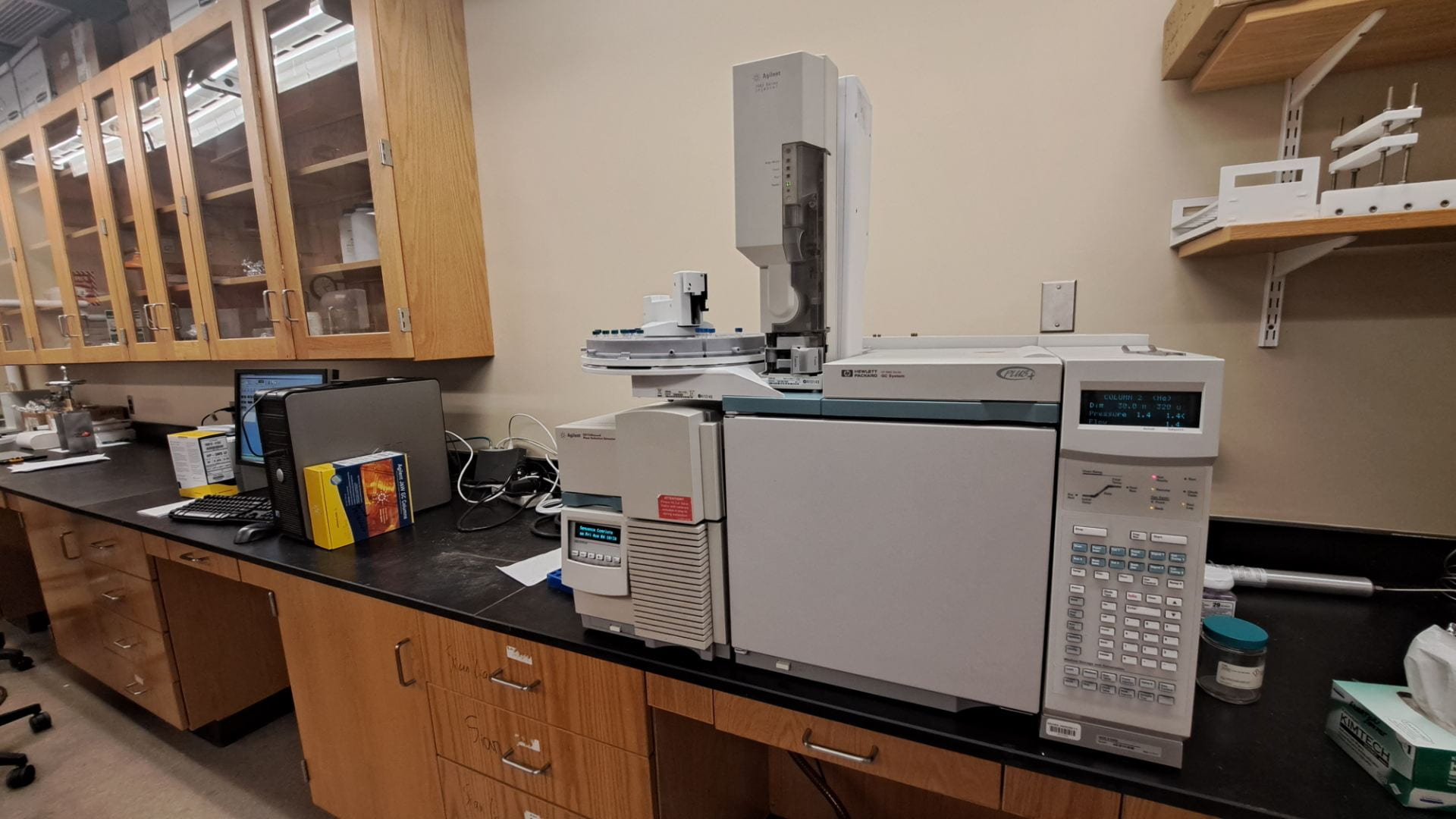
Agilent Tech HP 5973N GC-MS
The Agilent Tech HP 6890N GC with MS/EC Detectors measures the concentration of halogenated organic compounds and aromatic pollutants in extracted samples. These compounds are separated by gas chromatography and the detector compiles a chemical spectrum, which can be analyzed to identify and quantify the compounds. The micro-electron capture detector, μECD has a cell plated with 63Ni, measures trace levels (1-500 pg/μl) of halogenated and aromatic pollutants. It has a detectability of 50 femtograms and a wide-ranged sampling rate from 5 to 50 Hz. The mass spectrometer measures the molecular weight of a compound to provide data to both quantify and identify compounds.
